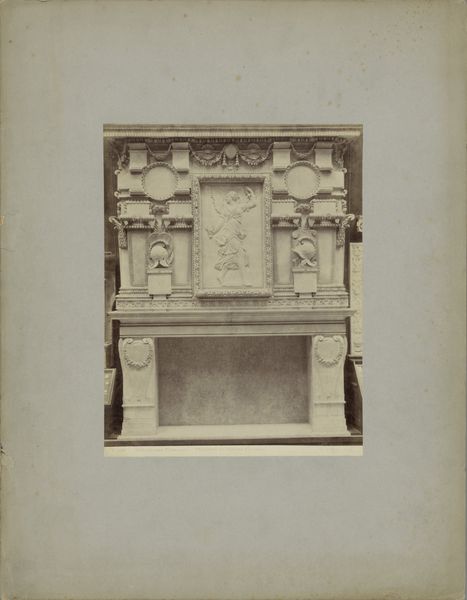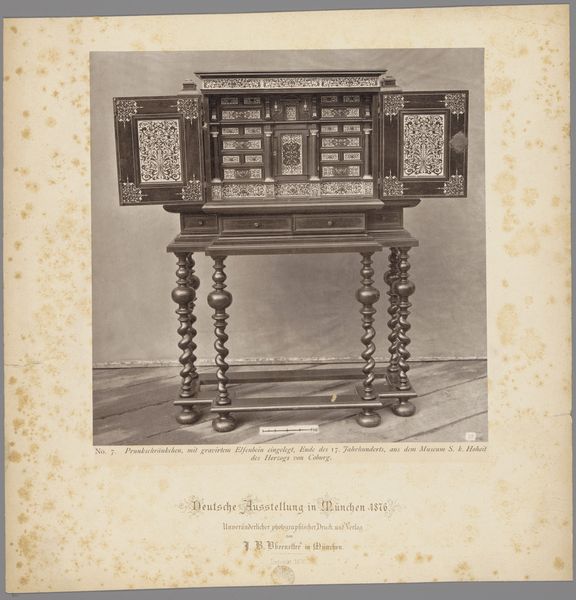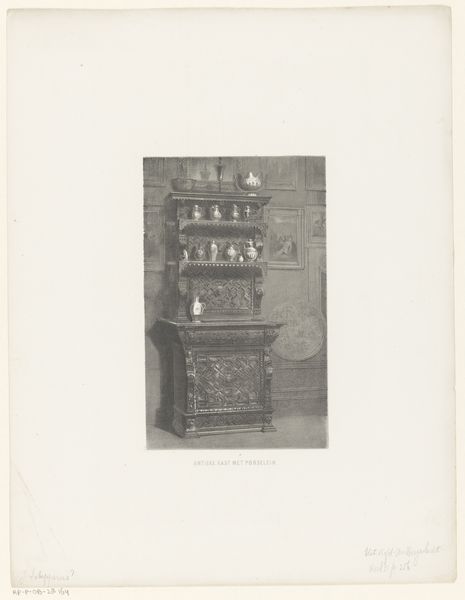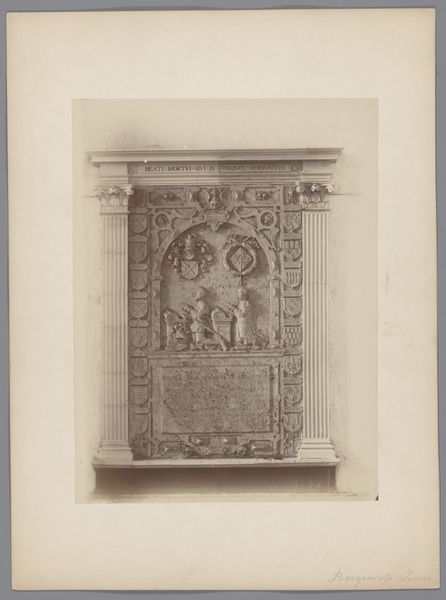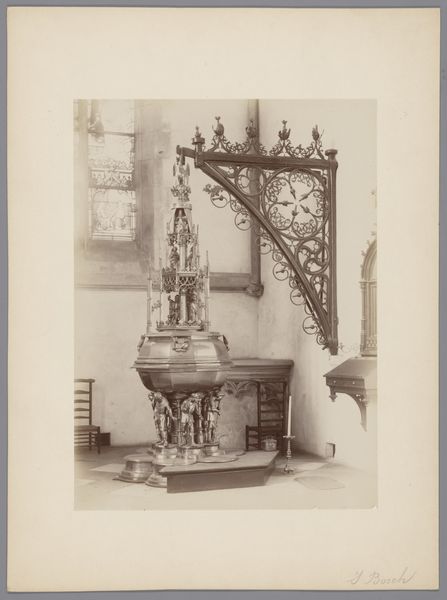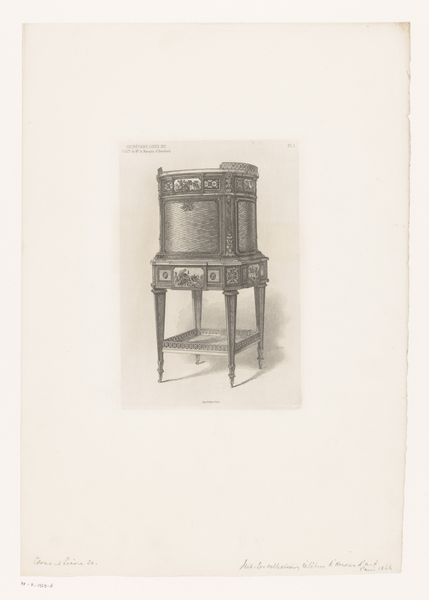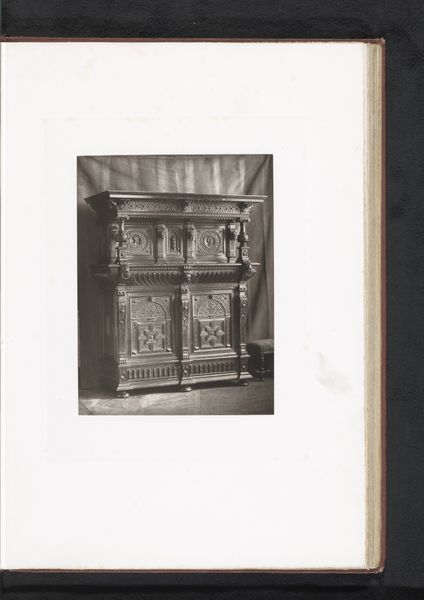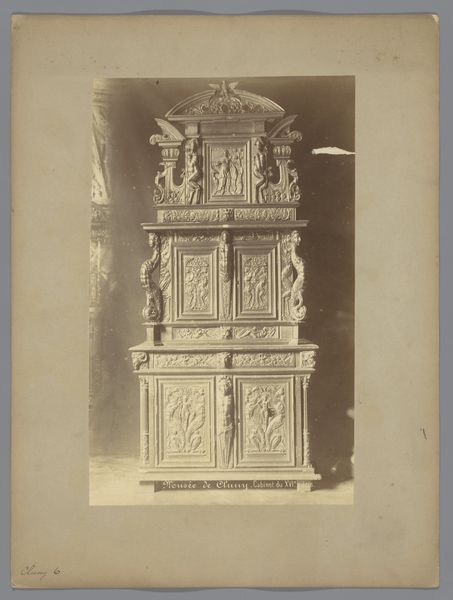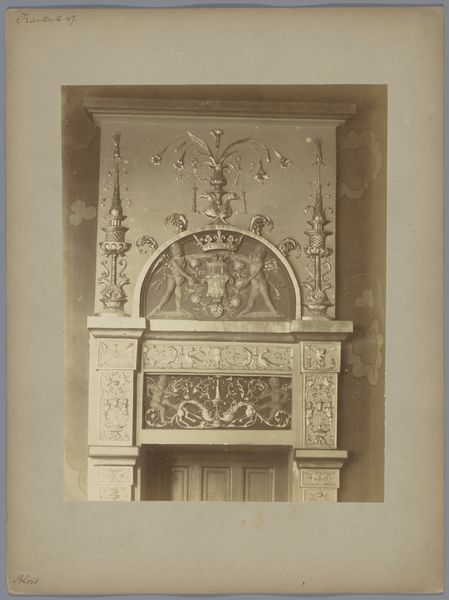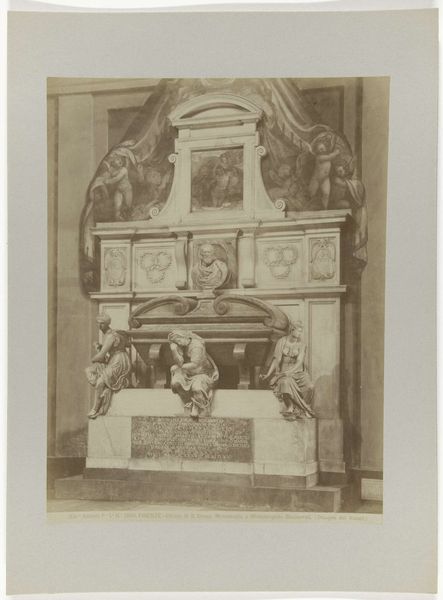
Kast van een Alkmaarse schutterij, in de collectie van het Koninklijk Oudheidkundig Genootschap, 1877 1864 - 1867
0:00
0:00
#
pencil drawn
#
photo of handprinted image
#
amateur sketch
#
aged paper
#
light pencil work
#
pencil sketch
#
light coloured
#
old engraving style
#
incomplete sketchy
#
pencil work
Dimensions: height 209 mm, width 150 mm
Copyright: Rijks Museum: Open Domain
Editor: So this is "Kast van een Alkmaarse schutterij, in de collectie van het Koninklijk Oudheidkundig Genootschap, 1877," created sometime between 1864 and 1867. It’s attributed to Pieter Oosterhuis and is currently held at the Rijksmuseum. The piece shows an ornately decorated cabinet, rendered in what appears to be pencil, although the tags describe the work as a "photo of handprinted image." It looks like an incredibly detailed study. What do you see in this work? Curator: What strikes me is how this photograph – likely meant as documentation – highlights the intertwined relationship between civic identity, craftsmanship, and emerging technologies. "Schutterijen" were citizen militias, very important in Dutch society. The cabinet would have been a symbol of their power and local pride. The photograph then, made between 1864-67, exists as evidence of the militia and the collection made by Koninklijk Oudheidkundig Genootschap or Royal Antiquarian Society. Editor: That makes sense. So the photograph functions both as a record and, in a way, participates in building that sense of civic pride? Is that why it ended up at the Rijksmuseum? Curator: Precisely! Museums like the Rijksmuseum play a key role in constructing national narratives. By collecting and displaying objects like this cabinet and photographs documenting them, they reinforce specific ideas about Dutch history and identity, power and its symbols. The level of detail preserved by the photographic process adds to the cabinet’s perceived historical significance. It almost romanticizes the past. Editor: It's interesting to think about the museum’s role in shaping how we see history, and how even a photograph can contribute to that process. Thanks for clarifying! Curator: My pleasure. Thinking about it from a societal point of view really helps.
Comments
No comments
Be the first to comment and join the conversation on the ultimate creative platform.
